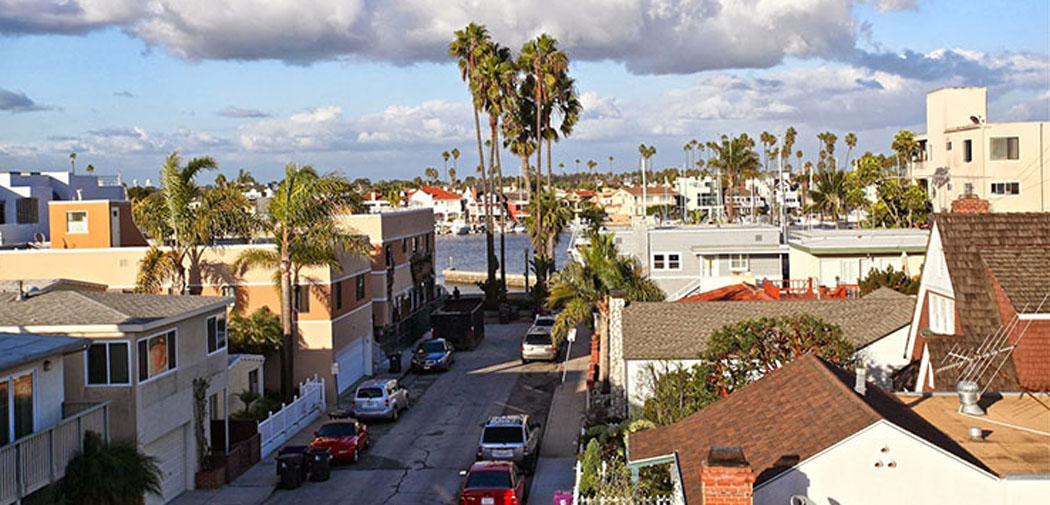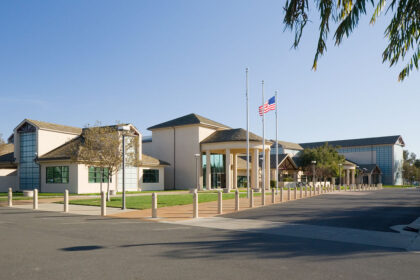Los Alamitos (Spanish for ‘”The Little Cottonwoods”‘) is a city in Orange County, California. Take a look below for 15 interesting and obscure facts about Los Alamitos, California, United States.
1. The city was incorporated in March 1960. The population was 11,449 at the 2010 census, down from 11,536 at the 2000 census.
2. The adjacent unincorporated community of Rossmoor uses the same 90720 Zip Code in its mailing address, but is not part of the city.
3. The Los Alamitos Race Course is named for the city, but lies in the neighboring city of Cypress.
4. The USA Water Polo National Aquatic Center is located on the Joint Forces Training Base – Los Alamitos.
5. The history of the area during the Californio period and after U.S. annexation is detailed in the article on Rancho Los Alamitos. The town of Los Alamitos was established in 1896 by Lewellyn Bixby to support the new sugar beet factory in town built by the extremely wealthy Clark Brothers. William Andrews Clark, a future Senator from Montana, had built his fortune in mining, banking and logging in that state.
6. His younger brother, J. Ross Clark, managed their operations in California after he moved to that state for health reasons. Lewellyn Bixby, whose family owned the surrounding land on the Rancho Los Cerritos and Rancho Los Alamitos, had been trying to build a sugar beet factory in that area for a few years but, due to financial losses in the 1880s, he no longer had the financial capital to undertake the sugar beet factory complex on his own.
7. Bixby had made his fortune back in the 1850s when he and his cousins Benjamin and Thomas Flint, formed Flint, Bixby & Co. which became a thriving entity in mutton and wool, all originally housed on the Rancho San Justo, south of San Jose. After making an additional fortune from selling wool to the government during the Civil War, the Flints and Bixby bought up many properties in Southern California.
8. One was the future Irvine Ranch and another was the Rancho Los Cerritos which makes up much of the western half of Long Beach. Flint, Bixby hired Lewellyn’s younger brother Jotham to manage the Cerritos. When Flint, Bixby broke up Lewellyn assumed their Southern California properties and moved to Los Angeles and became the senior partner in his operations with his brother Jotham.
9. Around 1881, a cousin, John W. Bixby wanted to purchase the Rancho Los Alamitos. John W. put together a consortium of himself, his cousins Lewellyn and Jotham (owners of Rancho Los Cerritos) and banker I.W. Hellman to finance the purchase of the Alamitos land. Upon John’s sudden death on May 7, 1887, the ranch was divided between the three owning families.
10. The northern third adjacent to the Rancho Los Cerritos — the land roughly north of present Orangewood Ave.—went to the Lewellyn-Jotham faction (which later became the Bixby Land Company). By the mid-1890s, after the crash following the land boom of the 1880s—this group was relatively cash-poor and land rich.
11. Having experimented in Northern California with sugar beets, the Bixbys agreed to provide the land, and contracted with Montana copper baron William A. Clark to provide the capital, and got E.A. Dyer to provide the expertise to build a new sugar beet factory on the Bixby’s land. The community that grew up around this new sugar beet factory complex—with its streets of company houses for workers and surrounding farms—came to be called Los Alamitos. (As part of his arrangement to build and operate the sugar beet factory, William Clark and his brother H. Ross, who actually ran the Los Alamitos operation, also received 1,000 acres east of the factory and a year later completed a purchase of 8,000 acres (32 km2) of land north of the sugar plant—most of the latter in the Rancho Los Cerritos boundaries—that would eventually become the Long Beach Airport, Long Beach City College, and the city of Lakewood.
12. Also, Clark and Hellman were intricately involved with the machinations and corporate dealings of railroad tycoon E. H. Harriman and Henry Edwards Huntington and the destiny of the Southern Pacific in Southern California. In addition, some time after establishing Los Alamitos, the Clarks completed their railroad from Los Angeles to Salt Lake City, establishing the desert stop of Las Vegas in the process.
13. In the early 1900s, sugar beets were delivered to a factory by horse and wagon. Economics and an elimination of a protective tariff, combined with an insect infestation in 1921, caused sugar-beet crop to drop significantly in Orange County and the eventual demise of the sugar beet industry there and in Los Alamitos. But the town that had sprung up continued to grow.
14. On the lands south of the factory (and current Orangewood Avenue), Fred H. Bixby, son of John Bixby and future member of the Cowboy Hall of Fame, used his sugar beet lands as a finishing ranch to fatten cattle before sending them off to slaughter (he also managed Hellman’s lands in present Seal Beach). Bixby, one of the more progressive ranchers of his time, allowed European immigrant, Mexican, and Japanese farmers to rent the land and grow crops. At the beginning of World War II, the Japanese farmers were rounded up by the military and relocated to internment camps at Manzanar and elsewhere.
15. Just prior to and during early World War II, the area around Los Alamitos became a major center for the aircraft industry. The Clark heirs arranged for Donald Douglas to begin construction of the Douglas Aircraft Company aircraft plant just north of the Long Beach airport. At the same time the Navy decided it needed an auxiliary airfield for its Reserve Training facility at the increasingly crowded Airport. A touch and go field was built on the level ground just east of Los Alamitos in August 1940. This was the first military post in Orange County.




